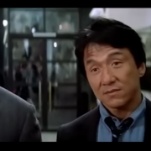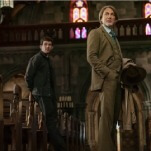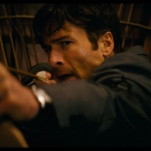Guy Maddin’s The Forbidden Room is a hilarious nesting doll of lost cinema

Anyone who’s ever fallen down a Wikipedia rabbit hole—clicking on one article, then being distracted by another topic linked within, and then another topic linked within that topic, until it’s hours later and you can no longer remember what you were curious about to begin with and it takes 37 clicks of the back arrow to escape—will feel a sense of déjà vu watching Guy Maddin’s labyrinthine The Forbidden Room. Co-directed with Evan Johnson (who’d previously worked as a camera operator on My Winnipeg), the film is shot in Maddin’s signature style, as an homage to silent and early sound cinema… but with a vengeance. The title sequence alone, for example, replicates at least a dozen archaic opening-credits templates, sometimes changing from one to another mid-credit. And each of The Forbidden Room’s many nested narratives was inspired by an actual lost film from early in cinema history. In some cases, Maddin and Johnson have adapted an extant synopsis; in others, only a titillating title survives, and they’ve invented an absurdist story to fit it. The result isn’t necessarily Maddin’s best film, but it’s certainly his most film.








































